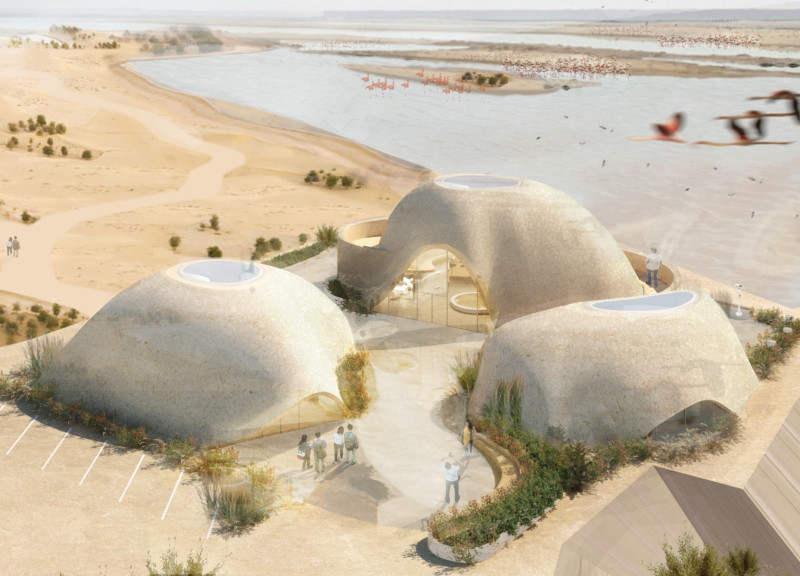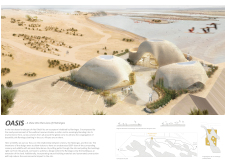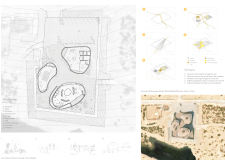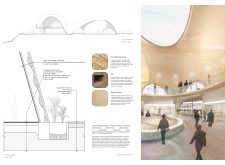5 key facts about this project
In the desert landscape of Abu Dhabi, a visitor center emerges within a wetland reserve that serves as a habitat for flamingos. The design enhances the experience of connecting with nature while ensuring that ecological principles are respected. By allowing for clear views and integrating the structure into its surroundings, the center aims to foster a deeper understanding of the local ecosystem and provide meaningful interactions for visitors.
Architectural Concept
The focus is on the relationship between visitors, the flamingos, and the natural environment. The center is designed to provide visitors with unobstructed 360-degree views of the wetlands. This thoughtful positioning allows guests to observe wildlife without interfering with their behaviors. The architecture acts as an extension of the landscape itself, promoting a harmonious connection between the built and natural elements.
Spatial Organization
The layout consists of pathways that navigate through the site, allowing easy movement for visitors. Essential spaces are included, such as a reception area, office, gift shop, training room, storage, display room, café, and outdoor viewing spots. Each area is strategically placed to enhance access and interaction, supporting a rewarding visitor experience while keeping the natural habitat intact.
Materiality
Emphasis is placed on materials that emphasize sustainability and local availability. Dried date palm leaves are incorporated for insulation and reinforcement in the walls, reflecting traditional building methods. Cob is used as a low-cost, environmentally friendly alternative to concrete, valued for its sourcing ease. Travertine stone is chosen for its durability and is featured in both walkways and flooring, reinforcing the connection to the surrounding landscape.
Design Detail
Observation points are thoughtfully positioned to offer views of the wetlands, allowing visitors to closely observe flamingos in their natural environment. These carefully located spots enhance the experience by bridging the gap between humans and nature. With this design approach, the project emphasizes environmental awareness and offers a direct interaction with the local ecosystem.























































